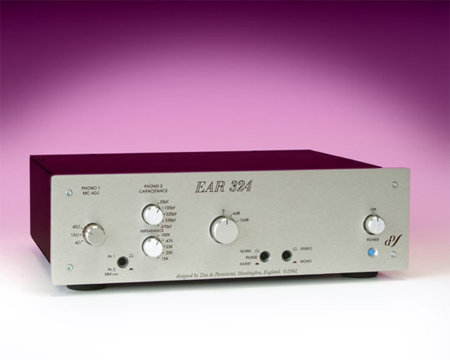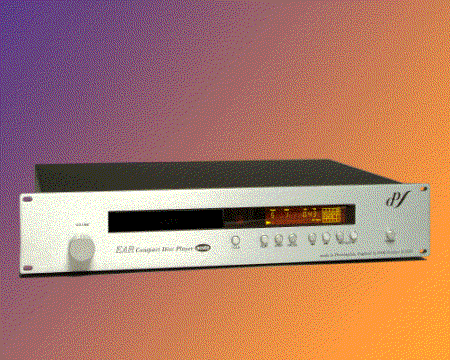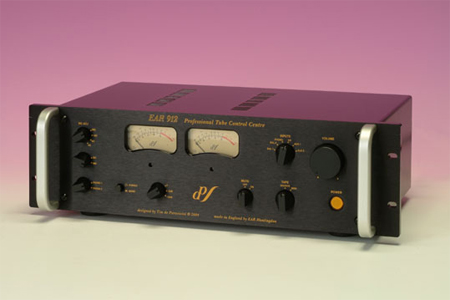|
You are reading the older HTML site Positive Feedback ISSUE july/august 2007
Darwin Meets the Audiophile:
Survival of the Fittest
After 45 years as an audiophile, numerous years as an opera singer, and the better part of a decade as an audio reviewer, a new and amazing event has occurred in my reference system, but before I tell you what it is, a bit of background is in order. I started those many years ago with a Dual turntable/ADC cartridge, Sony tape deck, Dynaco amp and preamp, and AR2AX speakers. That's when the well-known dance of components began—or at least I thought that's what was happening. Now I know that as components, speakers, and front ends were coming and going, Darwin was at work. It was natural selection—picking the best of what was available, eliminating the weaker links so that the fittest survived, with the constant goal being the recreation of the recorded performance in my listening room. Dynaco gave way to McIntosh, which departed for ARC, which was zapped by Pass. VTL, Jadis, and Theta were introduced at some point, but overcome by the return of ARC. Then Pass came back, with Metronome, ModWright, and ART. On it went—natural selection created by the survival of the fittest!
About six years ago, my very first piece of E.A.R. gear came through the door. The E.A.R. 324 phono preamp trounced my Pass Xono, and sent it packing. During the next two years, I reviewed seven more high-end phono stages for PFO, but the 324 remained the strongest and survived. It has yet to be surpassed, whether I use my Benz, Grado, or ZYX cartridges.
The listening and reviewing continued, and while I was comparing the superb Cary Anniversary 805s to my Pass X600s in came the E.A.R. 890, which more than held its own in the subsequent three-way shootout. Actually, it advanced what I considered to be the state of the art. With the 890 and the Avalons, I saw heaven. The 890s (I now have two, bridged for mono) have survived assaults from NuForce, ART, CARY, ARC, and more, and have survived.
Very nearly the same thing occurred when I was reviewing CD players. Tim de Paravicini's first player, the Acute, appeared in the house at a time when I was evaluating the latest ModWright and the big Metronome two-chassis player. Both were fabulous, but the E.A.R. was a bit more realistic and involving, even when playing the CD layer of a hybrid disc while the ModWright played the SACD layer. At a quarter of the price of the Metronome, the Acute was a bit more revealing and right-sounding on my ruthlessly revealing Avalon Eidolons, so it stayed. What happened next is the stuff of fiction, but it happened. I had the excellent ARC Ref 3 preamp in for review. I'd owned lots of ARC preamps in the past, including the Ref 1, and the superiority of the Ref 3 was unquestionable. It was the first preamp to completely surpass my Pass X1 in every way, and I was ready to have it take its place in my reference system. I'd even negotiated a price, but then, along came Tim de Paravicinis's latest assault on the state of the art, the 912 tube preamp, with phono stage. It even had remote control (a new thing for an E.A.R. preamp). It cost a tad more than the ARC, but only a tad. I was able to directly compare the 912 to the almost-purchased Ref 3 while the Pass was still around. Before the comparisons happened, the realization hit me—with the 912 in the system, I would be listening, for the first time ever, to the same manufacturer's gear all the way from source to amp! This had never occurred before. Honest to God.
After numerous CDs, SACDs, and LPs, even some original master discs from my Alesis Masterlink, the E.A.R. 912 prevailed, by a wider margin than I thought possible, so I bought it. (By the way, I used Kubala-Sosna Emotion cabling and power cords throughout the system during all comparisons.) With the exception of the ModWright, which I use to play SACDs, I now have E.A.R. gear throughout my system, and the music is closer to reality than ever before. I didn't start out with this in mind. In fact, I presumed that at the end of the day I would be listening to a cocktail of equipment. This was the most logical outcome, but natural selection is random, and in this case, resulted in consistency rather than diversity. I was thrilled with what I was hearing, but it created a problem. The language of the reviewer let me down (though my ears did not). All those adjectives, and not one of them was truly applicable when I attempted to describe what the E.A.R. system did, and did better than anything that had gone before. I even considered inventing a word, taking "neutral" and combining it with "musical" to get "neusical.” That was obviously way too much of a stretch. In proper English, the best word I have been able to find is "harmonious,” meaning accurate, musical, and realistic. That makes Tim de P. a "harmonist”! So here goes: E.A.R. of Great Britain makes the most harmonious electronics on earth, and when used together, cannot be surpassed in the present state of our hobby. I have picked the E.A.R. gear because it has survived the battle of the fittest—the tough, ongoing comparison of the most harmonious extant. (Incidentally, the baby preamp of the E.AR. line, the 834L, has conquered its way into my second reference system, joining the Cary SET amp and ModWright Sony CD player powering the JM Labs Cobalts. It is wonderful indeed, and a terrific value at a bit more than $2000.) E.A.R. equipment requires a bit of patience to get. The components are hand made in England, in smaller quantities than most companies. The fact that their CEO and inspiration is not a young man, and that the British pound keeps getting more expensive, should give you two reasons to buy sooner than later. The musicians and manufacturers from all over the world that bring in Tim to improve or reinvent their gear seem to know something we all should know. Many audiophile labels have used Tim's modified tape decks or other equipment over the years, and the proof is in the listening. You should hear what I hear. My all-E.A.R. system (except for the speakers) is like a time machine, returning me to events recorded years ago. The newly reissued La Traviata, recorded in 1960 (a BMG/RCA SACD hybrid disc) sounds amazingly alive, real, and fresh. That's while listening to the CD layer of the hybrid with the E.A.R. Acute. Wow! Speaking of loudspeakers, I have a secret to tell. (It won't be one after I tell, but I am a loose-lipped reviewer.) Tim has built a loudspeaker! That's right, an entire E.A.R. system, from source through loudspeakers, will be at the Rocky Mountain Audio Show in October. Wild horses couldn't stop me from hearing this. Darwin calls!
|




